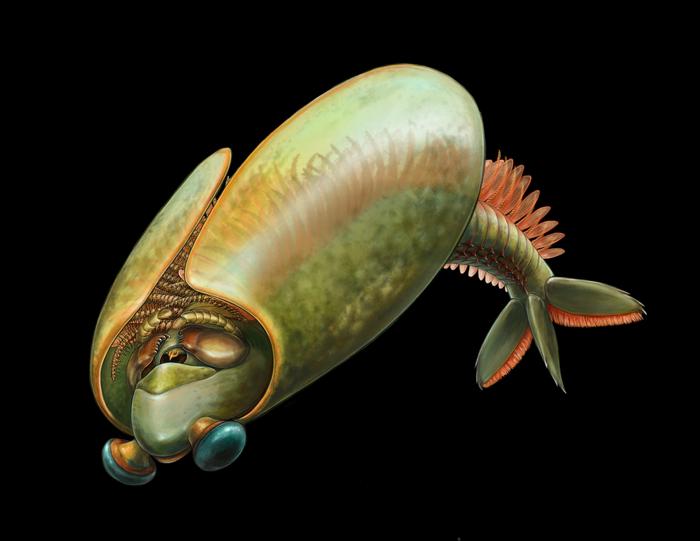Most people know how to eat a fish taco. Not as many understand how an ancient aquatic organism shaped like a taco ate.
Scientists revisited a fossil collection of the 500-million-year-old creature and determined that it used pincer-like mandibles to chew its food, according to a report in Proceedings of the Royal Society B Biological Sciences.
Revisiting an Ancient Fossil
Although the organism Odaraia had been discovered in the Burgess Shale over 100 years ago and described in the 1980s, several questions remained, says Alejandro Izquierdo-López, lead author, who was based at the Royal Ontario Museum (ROM) during this work as a Ph.D. student at the University of Toronto.
Did it sport mandibles? What did it eat? How did it capture its prey?
To answer those questions, a team of paleontologists examined about 150 of the 7-to-8-inch-long fossils from the Cambrian period using imaging techniques not available when Odaraia was first described in the ‘80s.
Lopez and colleagues were drawn to it because some studies showed a related organism had mandibles, making it seem likely that Odaraia would, too.
Observing Mandibles
The earlier studies drew on about 20 samples, while Lopez’s group had access to about 150 specimens — increasing their odds of finding key features.
“Even with 150 specimens evaluated, not all of them are well preserved, and we only had mandibles in a few,” says Lopez. “The numbers increased the odds of finding mandibles.”
Since the mandibles could be obscured by the sheer size of the creature’s head, as well as hidden in the rock in which the creatures were entombed, an imaging technique involving cross-polarized photography and microscopy boosted their chances further.
“By using cross-polarized light, we are able to ‘flatten’ how we see the fossil, observing features that would otherwise be obscured by small cliffs or faults on the rock,” says Lopez.
Ancient, Upside-Down Hunter
Seeing features like the mandibles and other details gave the researchers a better idea of how the creature hunted. It probably swam upside down, funneling water into its taco-shell-shaped carapace; spotted clusters of prey with its disproportionately large eyes, entangled its food with a net formed from legs sporting tiny spines, then chomped down with its mandibles.
Before examining the fossils, the paleontologists had hypothesized that Odaraia and its relatives were suspension-feeders — captured particles or prey from the water column above them.
“Now, for the first time, we have the anatomical evidence to support this hypothesis,” says Lopez.
They also identified a single tooth in the shape of a trident, located behind the mandible. This feature helps narrow down where Odaraia fits in the evolutionary tree. They knew it was an arthropod — of which there are around a million species. The pinchers narrowed it down into mandibulates. And the trident tooth provides a clue to modern ancestors.
Read More: What Are the Oldest Fossils in the World?
Article Sources
Our writers at Discovermagazine.com use peer-reviewed studies and high-quality sources for our articles, and our editors review for scientific accuracy and editorial standards. Review the sources used below for this article:
Before joining Discover Magazine, Paul Smaglik spent over 20 years as a science journalist, specializing in U.S. life science policy and global scientific career issues. He began his career in newspapers, but switched to scientific magazines. His work has appeared in publications including Science News, Science, Nature, and Scientific American.











/https://tf-cmsv2-smithsonianmag-media.s3.amazonaws.com/filer_public/34/31/3431771d-41e2-4f97-aed2-c5f1df5295da/gettyimages-1441066266_web.jpg)







Discussion about this post